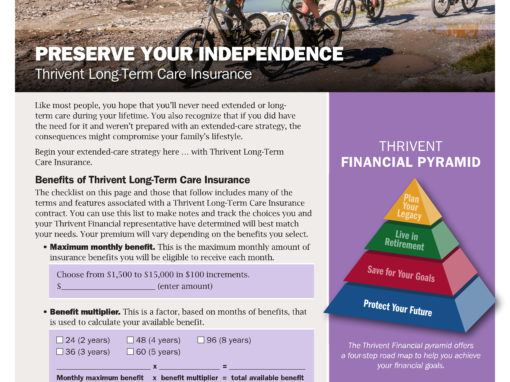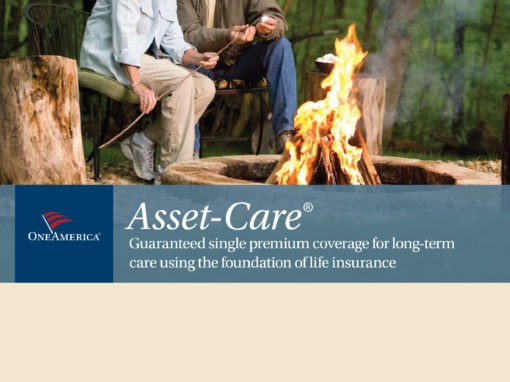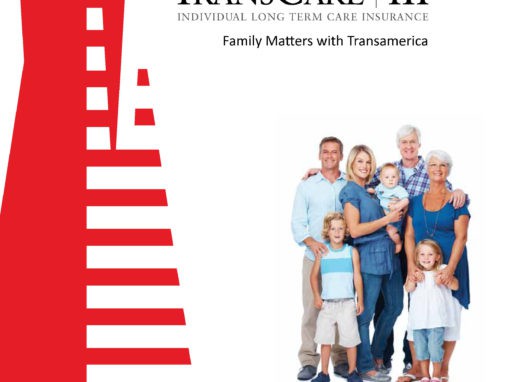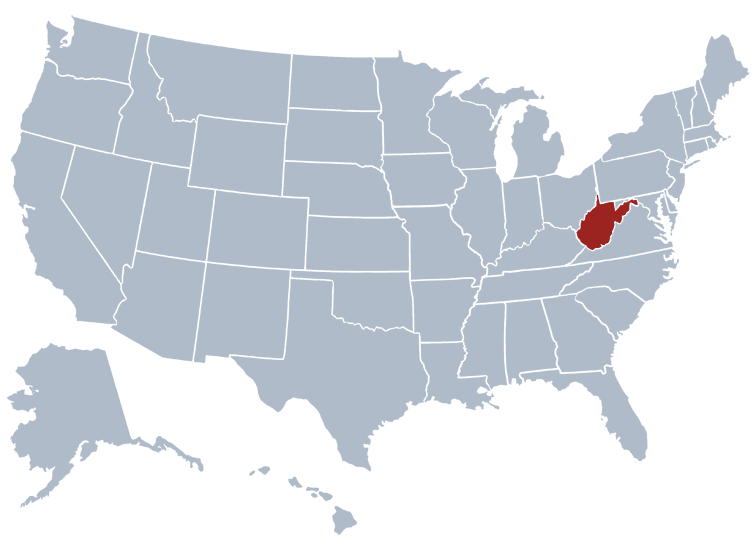Long Term Care Insurance Policy Brochures for West Virginia







Long Term Care Insurance West Virginia
Although West Virginia has not adopted the most recent long-term care insurance recommendations from the National Association of Insurance Commissioners, the State of West Virginia is committed to fostering West Virginians’ ability to age in place with improved economic security and in a setting they choose–whether at home, in a residential care facility, or elsewhere. As such, West Virginia guides their citizens to learn more about long-term care planning at the federal government website, the National Clearinghouse for Long-Term Care Information.
About 70 percent of people over age 65 require some type of long-term care services during their lifetime. Since there is a good chance that you might need long-term care services at some point, it is important to explore your options and plan ahead. Planning for long-term care is important because there is a good chance you will need some long-term care services if you live beyond the age of 65. About 70 percent of people over age 65 require some services. The older you get, the greater the chance that you will need long-term care.
Planning is also important because long-term care can be very expensive, and Medicare and other health insurance programs don’t cover many long-term care services. The cost of long-term care services is often more than what the average person can pay from personal income and savings. Planning ahead gives you the time to save for your long-term care needs or to find the payment options that work best for you if you need services.
Planning helps you understand:
- Services available from your family and in your community
- Special conditions (such as age or income) that may apply for receiving services
- Costs of services
- Public or private payment options available to you
How Much Care Will You Need?
Service and support needs vary from person to person and often change over time.
- On average, someone who is 65 today will need some type of long-term care services and supports for three years.
- Women need care longer (on average 3.7 years) than men (on average 2.2 years), mostly because women usually live longer.
- While about one-third of today’s 65-year-olds may never need long-term care services and supports, 20 percent will need care for longer than 5 years.
If you need long-term care services and supports, you may receive or use one or more of the following:
- Assistance with personal care or other activities from an unpaid caregiver who may be a family member or friend
- Services in your home from a nurse, home health or home care aide, therapist, or homemaker
- Services in the community such as adult day services
- Care in any of a variety of long-term care facilities
The table below shows that, overall, more people use long-term care services at home than in facilities. Also, people use long-term care services longer at home than in facilities.
Distribution and duration of long-term care services
| Type of care | Average number of years people use this type of care | Percent of people who use this type of care (%) |
|---|---|---|
| Any Services | 3 years | 69 |
| At Home | ||
| Unpaid care only | 1 year | 59 |
| Paid care | Less than 1 year | 42 |
| Any care at home | 2 years | 65 |
| In Facilities | ||
| Nursing facilities | 1 year | 35 |
| Assisted living | Less than 1 year | 13 |
| Any care in facilities | 1 year | 37 |
Paying for LTC
Long-term care services include personal care services like bathing, doing household chores, and other activities, to help you stay independent in your community. Long-term care also includes community services, such as meals, adult day care, and transportation services. Residential facilities, such as assisted living facilities and nursing homes, also provide long-term care services along with housing.
Depending on how much you need, these types of services can be expensive. Medicare and other health insurance do not include most long-term care services, so planning for how you might pay for long-term care becomes important. If you have fairly low income and savings, you may qualify for Medicaid, the federal public program that pays for most long-term care services. Other federal public programs, such as the Older Americans Act, and state-funded programs, pay for long-term care services, but, like Medicaid, these programs cover services for people with high levels of disability and low income and savings.
With 70 percent of us needing long-term care services at some point during our lives after turning age 65, and the limited coverage of public programs, there is a good chance you will have to pay for some or all of the services out of your personal income and savings. Even if you only need a little assistance at home with personal care, paying for long-term care out of your personal income and savings can be difficult. For example, you would pay more than $19,000 on average for a home health aide to assist three times a week, in 2010.
SOURCE: National Clearinghouse for Long-Term Care
(The State of West Virginia does not provide education about long-term care insurance but directs their citizens to learn more at this Federal educational website, portions of which were reproduced here for your convenience)
More information may be found at West Virginia Partnership for Elder Living
The State of West Virginia recommends:
Searching for Rate Increase information in West Virginia? We have the answers you need.


